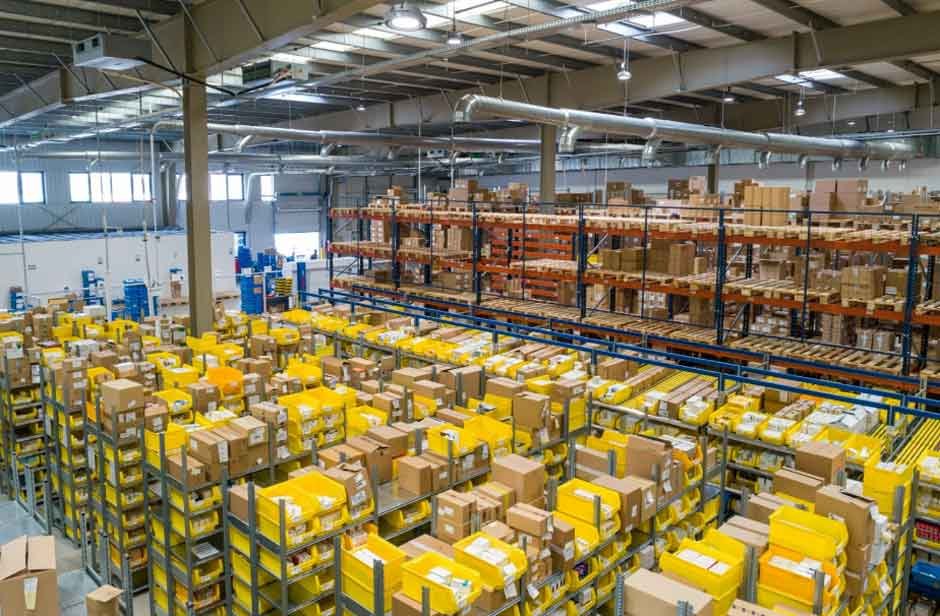Your delivery system might seem like a straightforward operation on the surface, but beneath that simplicity lies an intricate network of moving parts that can either propel your business forward or hold it back. Like an organism that appears simple yet functions with remarkable intelligence, an optimized delivery system operates with precision, adapting to challenges and finding the most efficient pathways to success. The difference between businesses that thrive and those that struggle often comes down to how well they’ve fine-tuned this critical component of their operations.
In today’s fast-paced commercial landscape, customers expect nothing less than perfection. They want their orders delivered quickly, accurately, and with complete transparency throughout the journey. Meeting these expectations while maintaining profitability requires more than just good intentions. It demands a strategic approach that combines process efficiency, cutting-edge technology, and smart partnerships. This guide will walk you through actionable strategies to transform your delivery operations from a cost center into a competitive advantage, including insights on leveraging professional logistics expertise to elevate your service quality.
Understand Your Current Delivery System
Before you can improve anything, you need to know exactly where you stand. Think of this phase as conducting a thorough health checkup for your delivery operations. Start by mapping every single workflow from the moment a customer places an order to when that package arrives at their doorstep. Document each handoff, every decision point, and all the systems involved in making deliveries happen.
Tracking key performance indicators gives you objective data to work with. Focus on metrics that directly impact your bottom line and customer satisfaction:
- Average delivery time from order to doorstep
- Percentage of orders delivered on first attempt
- Cost per delivery across different zones
- Customer satisfaction scores related to delivery
- Fuel consumption and vehicle efficiency rates
- Error rates in picking, packing, and shipping
Identifying bottlenecks requires honest assessment. Where do orders get stuck? Perhaps your warehouse picking process creates delays, or maybe route planning takes too long each morning. Look for patterns in customer complaints. Are certain delivery zones consistently problematic? Do specific product types cause more issues than others?
Benchmarking against industry standards provides context for your performance. Research what competitors and market leaders achieve in delivery times, accuracy rates, and customer satisfaction. This comparison reveals whether your challenges are unique or industry-wide, helping you set realistic improvement targets.
Embrace Technology for Smart Logistics

Technology has revolutionized what’s possible in delivery operations. Route optimization software represents one of the most impactful tools available. These systems analyze multiple variables simultaneously including traffic patterns, delivery windows, vehicle capacity, and driver schedules to create the most efficient routes possible. The result is reduced fuel costs, faster deliveries, and the ability to handle more orders with existing resources.
Inventory management systems provide real-time visibility into stock levels across all locations. This transparency prevents the costly mistakes of stockouts that disappoint customers and overstock situations that tie up capital unnecessarily. When your inventory system integrates seamlessly with order processing, you can promise accurate delivery dates with confidence.
Automated notifications keep customers informed without requiring manual effort from your team. Alerts for order confirmation, dispatch, out-for-delivery status, and successful delivery reduce anxiety and customer service inquiries. These touchpoints also provide opportunities to gather feedback and strengthen customer relationships.
Data analytics transforms historical information into predictive insights. By analyzing past delivery patterns, seasonal trends, and customer behavior, you can forecast demand more accurately and allocate resources proactively. This forward-looking approach prevents the reactive scrambling that leads to inefficiency and mistakes.
When working with SH Ground 3PL Logistics Services, ensure your technology stack integrates smoothly with their systems. Seamless data exchange between your platforms and your logistics partner’s infrastructure eliminates manual data entry, reduces errors, and provides unified visibility across the entire delivery chain.
Optimize Your Fleet and Resources
Your vehicles and drivers represent significant investments that deserve careful management. Vehicle utilization optimization means matching delivery loads to vehicle capacity strategically. Running half-empty trucks wastes fuel and reduces profitability, while overloading vehicles risks damage to goods and potential safety issues. Analyze delivery volumes by zone and time to right-size your fleet deployment.Also, Regular service for your fleet trucks ensures they remain in peak condition, minimizing downtime and maximizing efficiency.
Preventive maintenance schedules protect against the costly disruptions of unexpected breakdowns. A delivery truck sitting in the repair shop doesn’t just represent the cost of repairs but also lost revenue, disappointed customers, and the scramble to find alternative delivery solutions. Regular maintenance extends vehicle life and keeps your operations running smoothly.
Driver management extends beyond simply having enough people behind the wheel. Comprehensive training programs should cover efficient route following, fuel-saving driving techniques, proper handling of goods, and excellent customer service skills. Your drivers are often the only human contact customers have with your company, making them crucial brand ambassadors. Recognition programs and performance incentives encourage drivers to maintain high standards.
Sustainable practices in fleet management make both environmental and economic sense. Modern fuel-efficient vehicles reduce operating costs over their lifetime. Alternative fuel options like electric or hybrid vehicles may qualify for tax incentives while reducing your carbon footprint. Route optimization that minimizes unnecessary mileage benefits both your budget and the environment.
Partnering with professional logistics providers offers flexibility in resource management. Rather than maintaining excess capacity for peak periods that sits idle during slower times, you can scale delivery capabilities up or down as needed. This approach transforms fixed costs into variable ones, improving overall financial efficiency.
Streamline Order Management
Efficient delivery begins long before a package leaves your facility. Centralized order management systems eliminate the confusion and errors that arise from multiple disconnected platforms. When all orders flow through a single system regardless of their origin, whether from your website, marketplace channels, or phone orders, you maintain consistency and accuracy.
Order prioritization ensures time-sensitive deliveries receive appropriate attention. Perishable goods, expedited shipments, and high-value orders need special handling pathways. Automated prioritization rules can flag these orders immediately for faster processing without requiring manual review of every order.
Integration between order management and warehouse operations creates smooth handoffs. When your warehouse team receives clear, accurate picking lists automatically generated from incoming orders, they can work efficiently without delays or confusion. Real-time inventory updates prevent the frustration of discovering an item is out of stock after the order has been placed.
Automated documentation and invoicing eliminate administrative bottlenecks. Electronic shipping labels, packing slips, customs forms, and invoices generated automatically save time and reduce errors. This automation also creates digital records that simplify tracking and resolving any issues that arise.
Improve Customer Communication and Experience

Transparency throughout the delivery journey transforms customer anxiety into confidence. Proactive notifications at each milestone keep customers informed without requiring them to track packages manually. Alerts when an order ships, when it’s out for delivery, and upon successful delivery create touchpoints that reinforce your reliability.
Easy returns and complaint resolution processes demonstrate your commitment to customer satisfaction. Clear instructions for initiating returns, prepaid return labels, and responsive customer service turn potentially negative experiences into opportunities to build loyalty. Making this process simple shows customers you stand behind your products.
Feedback collection provides invaluable insights for continuous improvement. Post-delivery surveys asking about the delivery experience highlight what’s working well and where improvements are needed. Analyzing this feedback alongside operational metrics helps you prioritize enhancement efforts that matter most to customers.
Personalized delivery options cater to diverse customer needs and preferences. Offering choices like delivery time windows, weekend delivery, or pickup locations gives customers control over their experience. Premium delivery options can also create additional revenue streams for your business.
When collaborating with SH Ground 3PL Logistics Services, verify that they share your commitment to exceptional customer communication. Your logistics partner’s performance reflects directly on your brand, so alignment in service standards is essential.
Partner with Reliable Logistics Providers
Professional logistics partnerships can dramatically enhance your delivery capabilities while reducing operational complexity. Selecting the right partner requires careful evaluation across multiple dimensions. Network coverage determines whether they can effectively reach your customer base. A provider with extensive coverage in your key markets ensures consistent service quality across your delivery zones.
Delivery speed and reliability form the foundation of customer satisfaction. Investigate prospective partners’ on-time delivery rates, how they handle exceptions, and their approach to problem resolution. Technology capability matters increasingly as systems integration becomes standard practice. Your logistics partner should offer robust APIs, real-time tracking, and data reporting that integrates seamlessly with your operations.
Long-term partnerships built on trust deliver better results than transactional relationships with the lowest bidder. When you invest time in developing a collaborative relationship with your logistics provider, they become invested in your success. This partnership approach encourages them to suggest improvements, alert you to potential issues early, and go the extra mile when challenges arise.
Scalability represents a critical advantage of working with established logistics providers. As your business grows geographically or experiences seasonal volume fluctuations, your logistics partner can flex capacity to match your needs. This scalability would be prohibitively expensive to build internally but becomes accessible through partnership.
Specialized expertise offered by professionals brings years of accumulated knowledge to your operations. They understand regulatory requirements across different regions, have established relationships with carriers, and maintain the infrastructure needed for complex logistics challenges. This expertise accelerates your ability to enter new markets and handle sophisticated delivery requirements.
Monitor Performance and Continuously Improve
Optimization is not a one-time project but an ongoing discipline. Establishing clear metrics for tracking delivery performance creates accountability and highlights areas needing attention. Monitor on-time delivery rates closely, as this metric directly impacts customer satisfaction and repeat business. Track customer complaints specifically related to delivery to identify recurring issues.
Fuel efficiency metrics reveal opportunities for cost savings through better route planning or driver training. Order accuracy rates indicate how well your picking and packing processes function. Each of these metrics tells part of the story about your delivery system’s health.
Regular operational audits conducted quarterly or semi-annually provide structured opportunities to assess efficiency. These audits should examine workflows, technology utilization, resource allocation, and cost structures. Bring together team members from different functions to gain diverse perspectives on improvement opportunities.
Benchmarking against evolving industry trends ensures you don’t fall behind competitors. Delivery expectations continue rising as companies like major ecommerce platforms set new standards for speed and service. Staying informed about industry developments helps you anticipate changing customer expectations rather than reacting after losing business.
Partnership performance reviews with your logistics providers maintain alignment and identify collaboration opportunities. Schedule regular meetings to review service levels, discuss challenges, and explore ways to enhance the relationship. These conversations often reveal quick wins that benefit both parties.
Risk Management and Contingency Planning
Even the most optimized delivery system faces disruptions. Weather events, traffic accidents, vehicle breakdowns, and supply chain interruptions are inevitable. The difference between businesses that weather these storms smoothly and those that scramble reactively lies in preparation.
Identifying potential risks specific to your operations and markets allows targeted contingency planning. If you serve coastal areas, hurricane season requires specific preparation. Urban delivery operations face different challenges than rural routes. Map out likely scenarios and their potential impact on your delivery capabilities.
Contingency plans should address backup routes for critical delivery corridors, relationships with alternate carriers who can step in during emergencies, and emergency stock management protocols. Having these plans documented and communicated ensures your team can execute them quickly when needed rather than creating solutions under pressure.
Insurance and liability coverage protect your business financially when things go wrong. Ensure adequate coverage for goods in transit, vehicle accidents, and third-party liability. Regular policy reviews ensure your coverage keeps pace with your growing business.
Flexibility in your logistics partnerships provides resilience during disruptions. Providers with diverse networks and resources can adapt more readily to unexpected challenges. This flexibility becomes a competitive advantage when others struggle to maintain service during difficult periods.
Predictive analytics using historical data and external information sources can help anticipate challenges before they impact operations. Weather forecasting integrated with route planning allows proactive adjustments. Traffic pattern analysis helps avoid predictable congestion. This forward-looking approach minimizes disruption.
Sustainability and Long-Term Strategy
Building a delivery system for the future requires attention to both environmental responsibility and technological evolution. Green logistics practices reduce your environmental footprint while often decreasing operational costs. Electric vehicles, while requiring upfront investment, offer lower per-mile operating costs and appeal to environmentally conscious customers.
Optimized packaging reduces materials costs and shipping expenses while demonstrating environmental commitment. Right-sizing packages eliminates wasted space and materials. Exploring recyclable or biodegradable packaging materials aligns with growing consumer preferences for sustainable business practices.
Route optimization contributes to sustainability by minimizing unnecessary mileage and idle time. The fuel savings translate directly to reduced emissions and lower costs. This efficiency benefits both your profit margin and corporate environmental goals.
Customer appeal for sustainable practices continues growing. Many consumers actively choose brands demonstrating environmental responsibility. Communicating your sustainable logistics initiatives can differentiate your brand and attract customers who prioritize these values.
Innovation integration ensures your delivery system evolves with technological advancement. Artificial intelligence and machine learning are transforming logistics through better demand forecasting, dynamic route optimization, and automated decision-making. Staying informed about these developments and piloting promising technologies keeps your operations competitive.
Strategic alignment between your logistics capabilities and overall business expansion plans ensures delivery doesn’t become a bottleneck to growth. As you enter new markets, expand product lines, or pursue new customer segments, your delivery system must evolve accordingly. Regular strategic reviews of logistics capabilities should be part of broader business planning.
Conclusion
Optimizing your business delivery system represents one of the most impactful investments you can make in operational excellence and customer satisfaction. The strategies outlined here, from understanding your baseline performance through embracing technology, optimizing resources, streamlining processes, and building strong partnerships, create a framework for continuous improvement. Professional logistics providers bring expertise, scalability, and innovation that would be difficult to develop independently.
Remember that delivery optimization is not about achieving perfection once but rather building systems and disciplines that adapt and improve continuously. Market conditions change, customer expectations evolve, and new technologies emerge. Businesses that view their delivery operations as strategic assets requiring ongoing investment and attention will find themselves with sustainable competitive advantages.










